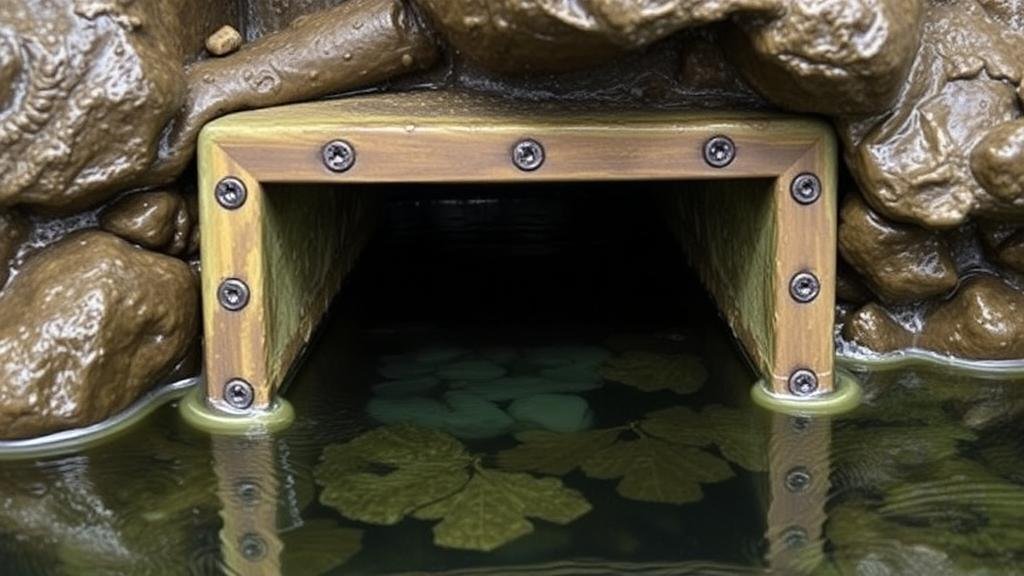How to Detect the Presence of Water-Flooded Chambers in Coastal Caches
How to Detect the Presence of Water-Flooded Chambers in Coastal Caches
Coastal caches, often formed by natural geological processes, can be prone to flooding due to rising sea levels and fluctuating groundwater. Detecting water-flooded chambers within these caches is critical for both environmental monitoring and hazard management. The following sections explore the methodologies, technologies, and practical applications for effectively identifying these chambers.
Understanding Coastal Caches
Coastal caches refer to sedimentary deposits located near shorelines which may contain buried organic materials and artifacts. e structures can hold significant archaeological value but are also vulnerable to saturation from seawater. A chamber is termed water-flooded when it is infiltrated by water, which can compromise both its archaeological integrity and surrounding ecosystems.
Indicators of Water-Flooded Chambers
Before deploying advanced detection technologies, certain visual and environmental indicators can signify the presence of water-flooded chambers in coastal caches. Key indicators include:
- Vegetation Health: Distressed or dead vegetation can indicate water saturation. Coastal flora, such as saltmarsh species, may exhibit wilting during prolonged inundation.
- Soil Composition: Changes in soil structure–such as an increased proportion of silt and clay–can suggest water retention within chambers.
- Surface Water Accumulation: Pools of stagnant water on the surface often signal underlying water-flooded conditions.
Geophysical Survey Techniques
To accurately detect water-flooded chambers, geophysical surveys utilize a range of techniques. These approaches are non-invasive and offer real-time data. Common methodologies include:
Ground Penetrating Radar (GPR)
Ground Penetrating Radar emits high-frequency radio waves into the ground and records reflections from subsurface structures, allowing for the mapping of geological features. In coastal caches, GPR can identify boundaries between dry and water-saturated sediments. Studies have shown that GPR can delineate flooded areas with around 90% accuracy when performed by trained personnel.
Electrical Resistivity Tomography (ERT)
ERT measures the resistance of subsurface materials to electrical current. Water has a much lower resistivity than soil, meaning flooded chambers can be easily identified. A notable example is an ERT study conducted in the Eastern U.S. that successfully revealed the extent of water-flooded chambers in coastal wetlands, assisting conservation efforts.
Seismic Refraction
This technique utilizes seismic waves to measure variations in the subsurface layers. Water-saturated sediments typically show different wave velocities compared to dry ones. By analyzing the refraction of seismic energy, geologists can infer the presence of water-flooded chambers. In coastal environments, this method has been effectively coupled with GPR for enriched data analyses.
Hydrogeological Assessments
Understanding the hydrological dynamics of coastal areas is crucial for detecting water-saturated chambers. Hydrogeological assessments involve studying groundwater levels, flow direction, and salinity profiles. Key steps include:
- Water Table Measurements: Regular monitoring of groundwater levels can indicate trends and potential flooding risks.
- Salinity Tests: Elevated salinity levels in surface water may suggest that groundwater influenced by seawater intrusion, a sign of potential flooding.
Case Studies
Real-world applications of these detection methods can enhance our understanding of water-flooded chambers. For example:
- The Chesapeake Bay, USA: In a comprehensive study conducted by the U.S. Geological Survey, GPR and ERT revealed significant water-saturated zones within historical caches, guiding remediation efforts to restore native vegetation.
- The Thames Estuary, UK: Using multi-method geophysical surveys, researchers identified flood-prone archaeological layers, leading to changes in local land-use planning to protect these valuable remnants.
Actionable Takeaways
Detecting water-flooded chambers in coastal caches necessitates a multi-faceted approach combining visual inspection, advanced geophysical techniques, and hydrogeological assessments. Practitioners in environmental science, archaeology, and urban planning can utilize these methods to:
- Use appropriate conservation strategies for vulnerable coastal areas.
- Monitor changing conditions due to climate change and anthropogenic influences.
- Help informed decision-making for land-use planning and disaster preparedness.
By adopting these methodologies and case study insights, stakeholders can better manage the risks associated with water-flooded chambers in coastal caches, thereby preserving both the environmental integrity and historical significance of these valuable geological formations.


